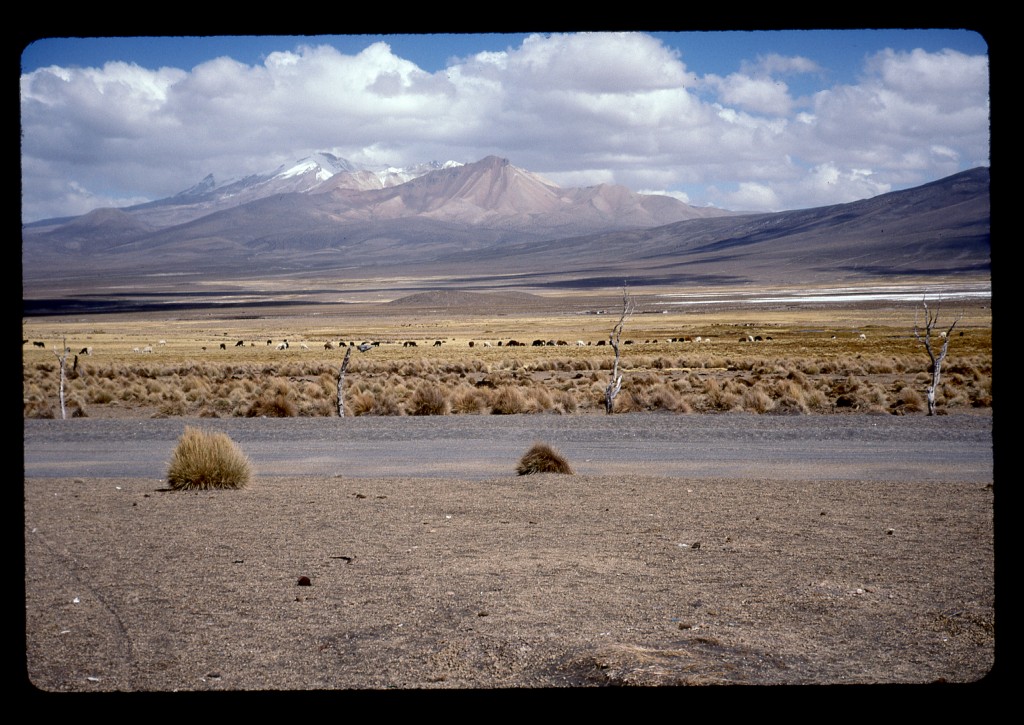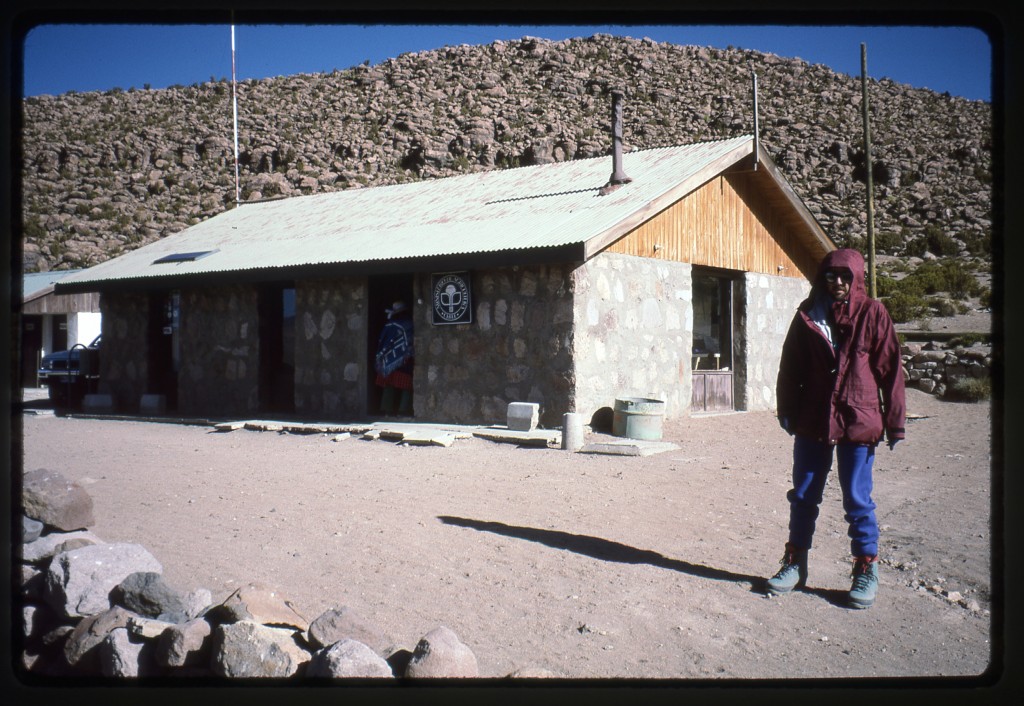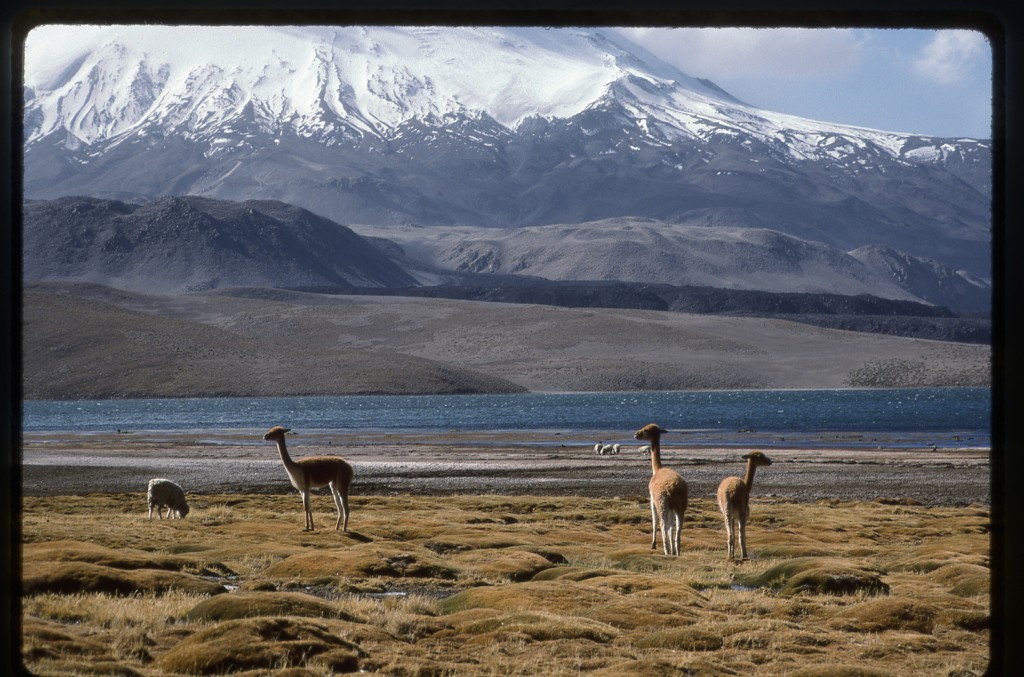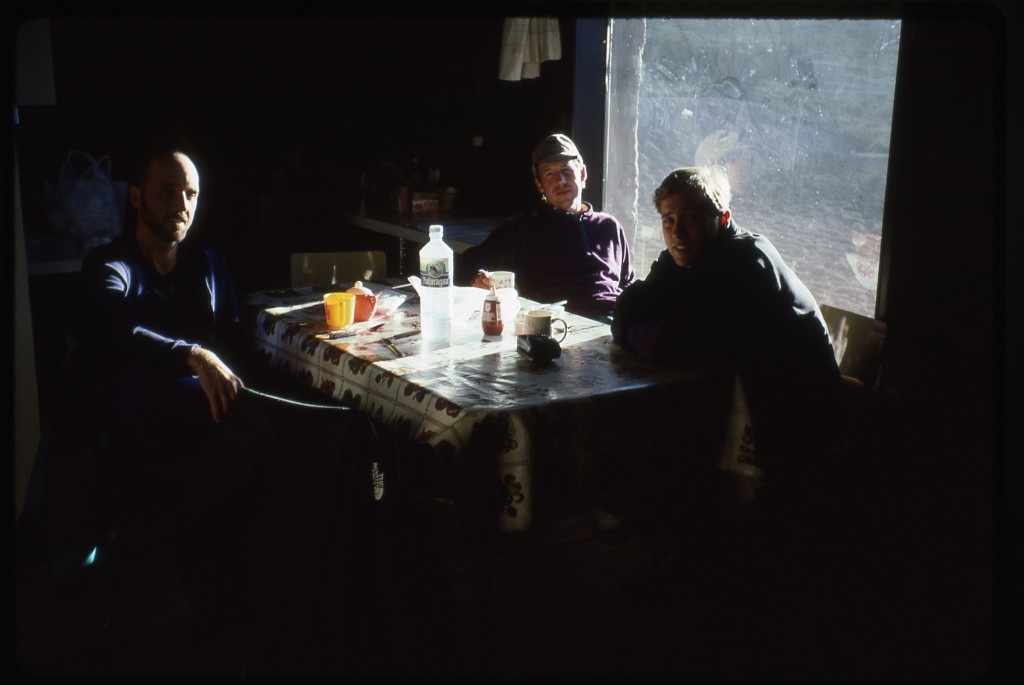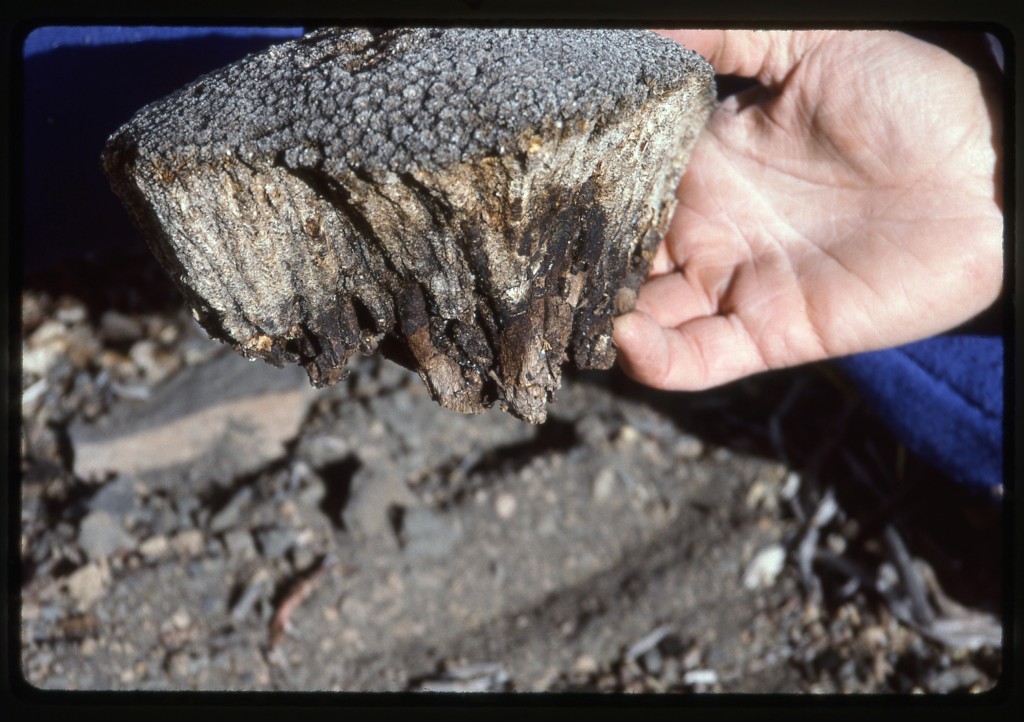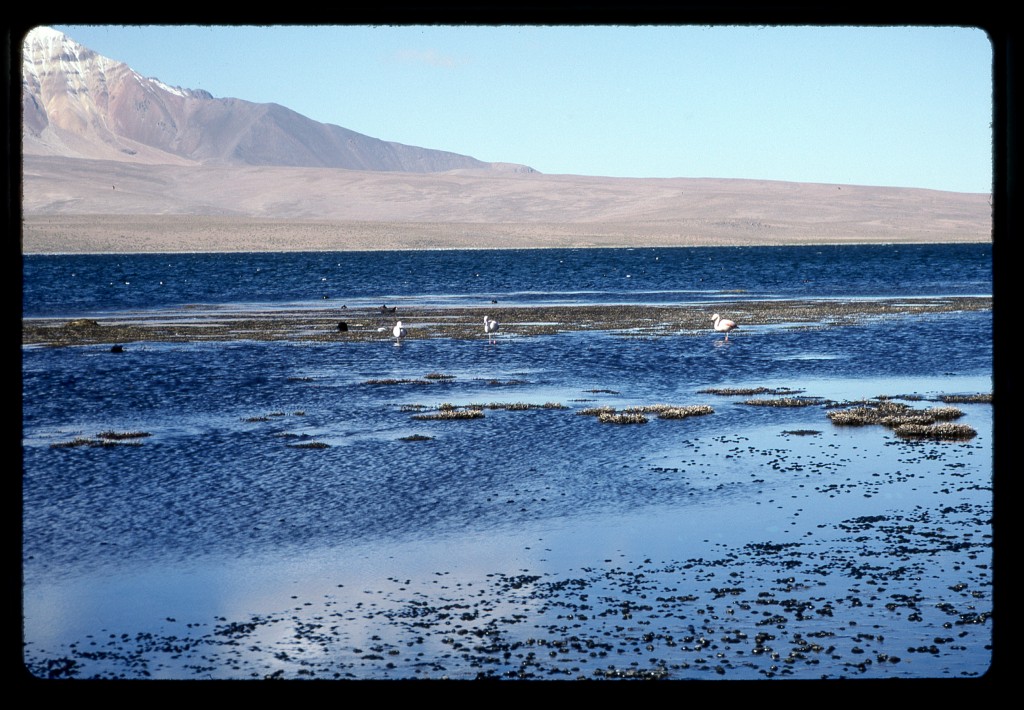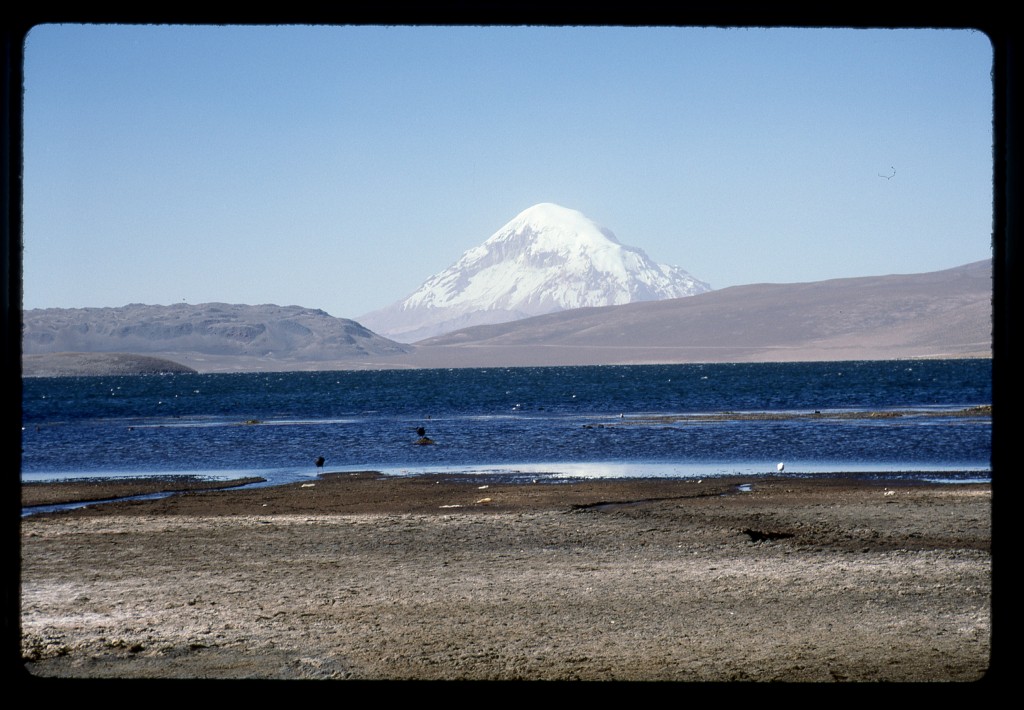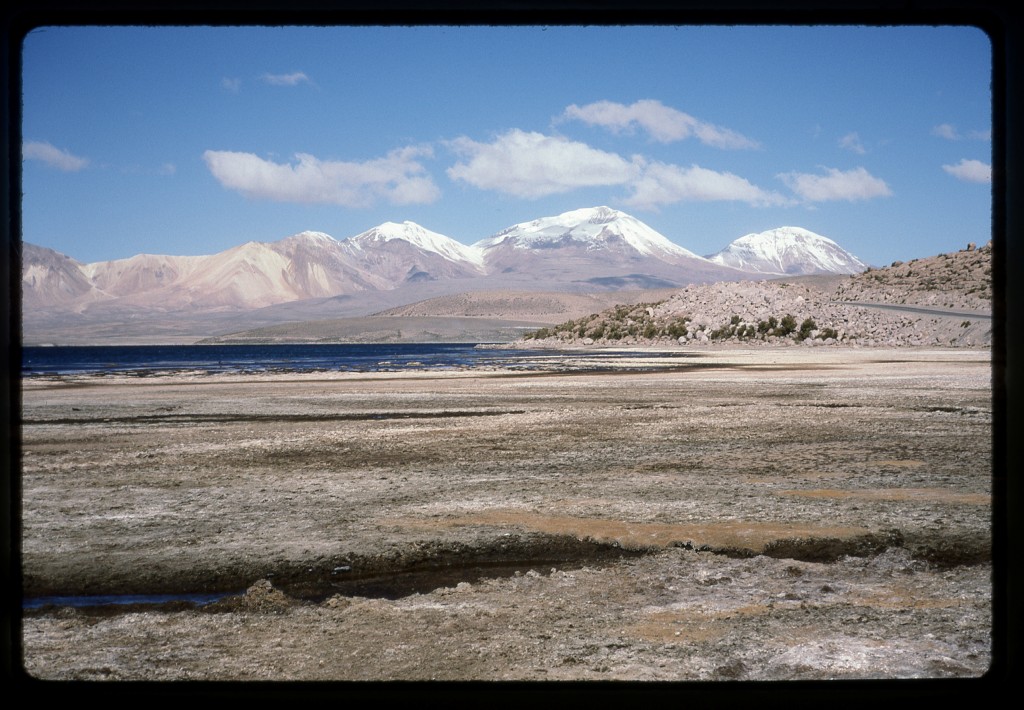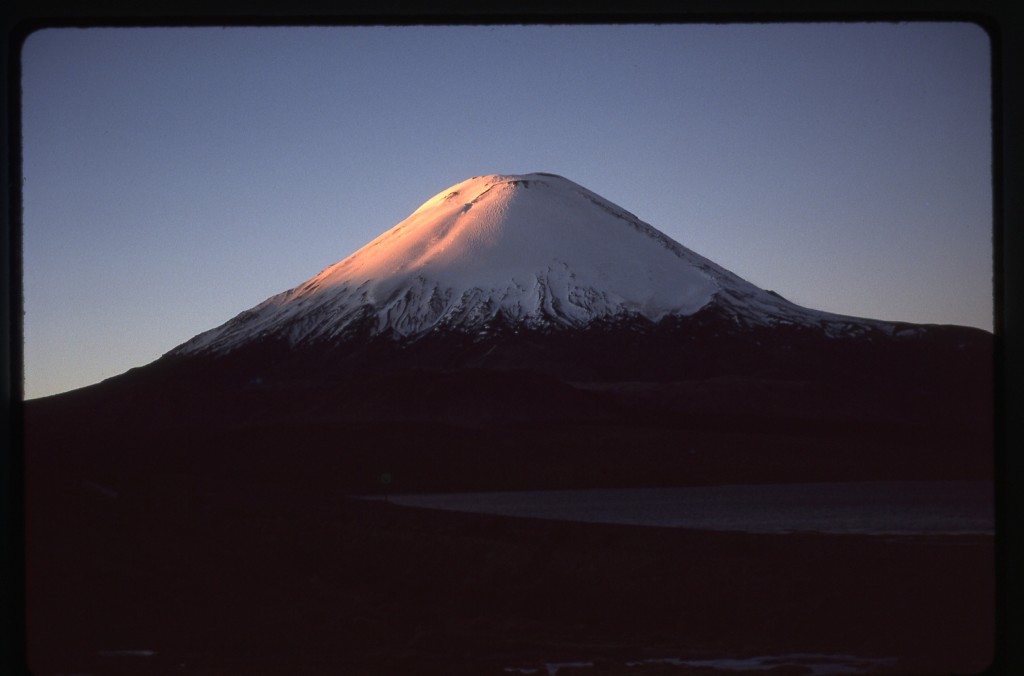We awoke at dawn to a biting cold. All of our gear was in the hut, where we packed it all up. There was a huge pile of stuff which we gave to Esteban – food, fuel and whatever else we figured we wouldn’t need from this point on. He told us there was a footpath we could follow that would take us back to Highway 4, at a point closer to the Chilean border than where we had left it near Lagunas. Esteban wanted to make sure that we got on to the right path, so he offered to accompany us for a kilometer or two. It was very windy, but at our backs, so that helped lessen the pain of carrying our still-heavy packs.
We said goodbye to this genuinely nice man and continued on foot along the excellent path until we arrived at the highway hard by a military post west of Lagunas. Settling in for a spell on the side of the road, we were surprised when the first vehicle along stopped to pick us up as we hitched a ride. A very friendly couple, an Argentine girl and her French husband, who lived in Iquique, Chile offered us a ride. They taught parapente for a living. We all talked excitedly as the few short miles passed until we reached Tambo Quemado where we cleared Bolivian customs. Next was the Chilean customs post at Chungará, where once again there were no issues. Only minutes later, we arrived at a refuge operated by CONAF, where our new friends dropped us off. What a place! In Lauca National Park, right across the highway from Lago Chungará, it sits at an elevation of 14,820 feet above sea level. The setting is magnificent, but more on that later.
The guardaparques at the lodge are very helpful and welcoming. In fact, once we had settled in, they offered to pick up some food for us in Putre this evening. One of them, a knowledgeable birder, helped me identify several species close by the refuge. It was an idyllic spot. Vicuñas grazed a few feet away from the building, unconcerned about the curious human onlookers. And sheep may safely graze.
The guests are quite the international group: two Germans just left, three Flemish arrived; two Americans were already here.
Brian and I cooked some soup, and others shared food and wine with us. The congeniality of the group was typical of that seen in these hostels, and is a major reason why I love staying in these places, no matter what the country. By 6:30 pm, the temperature outside was +15 degrees F. We stoked up the wood-burning stove – they burn dead yareta moss here, a common practice on the Altiplano.
We stayed up late talking with the others. For the first time in 5 days, I took a nice hot shower and changed my clothes. One of the Americans staying here is doing field research for his PhD, studying the wild tomatoes that grow in the area. He and his buddy are planning to try to climb a nearby mountain – we may accompany them to the trailhead tomorrow to check it out.
Aside from tossing and turning until after midnight, I slept well. Early the next morning, I arose to see a bright Mercury directly above Sajama. We ate a bit of something for breakfast, and then at 9:00 am the head guy arrived. He brought us cheese, rolls and canned fish, a fair trade for the $10 US we had given him the previous day. Soon, Brian and I left with him and one other guardaparque and the two Americans – we drove along the highway, then a rough dirt road to the west of Lake Chungará. It was a 30-minute drive to the road-end at the same elevation as the hostel. There, the two Americans headed out for an attempt on Parinacota volcano. Brian and I got pretty excited about the possibility of trying the climb ourselves. The park rangers said they weren’t allowed to be giving anyone a ride to do this, that actually one needed to go to Putre to get a permit to climb the mountain. However, if we promised to not discuss it with anyone else, they would, on the morrow, give us a ride to the same place. They wouldn’t accept a penny for their efforts.
Once returned to the hostel, I felt I needed some exercise so I decided to walk back to the border. It was only 5 km along the highway, but what scenery! First of all, there’s the lake itself – at 8.3 square miles and at an elevation of 14,820 feet above sea level, it is one of the world’s higher lakes, and sits higher than any point in the lower 48 states of the United States. In this photo can be seen Chilean flamingos and a couple of Giant Coots.
Then there are the nearby mountains. Sajama, back in Bolivia, is a mere 15 miles from the hostel.
Near the border, I took this shot of Parinacota volcano (6,342M, or 20,808 feet above sea level). Peaking out from behind its right flank is Pomerape volcano (6,282M, or 20,611′).
Here’s another stunner, taken from near the refuge. See the three snow-capped peaks on the right side of the picture? They are, from left to right: Umurata (18,757′); Acotango (19,857′); Guallatiri (19,918′). And they are much nearer than you might think. – Guallatiri is just under twelve miles distant.
This whole area has an amazing energy about it – I felt a wonderful natural high just from being there. When I got to the Chilean aduana, I told them I just wanted to walk around a bit and take some pictures – they were fine with that. I saw a large group of 50 or so vicuñas, and also a couple of rheas. Reluctantly, I had to leave, as the day was wearing on. Back at the aduana, I bummed a ride from the next vehicle that had to stop there. In a few minutes, they dropped me off back at the refuge.
Brian was sleeping, which was good. I’d been concerned about him, as he was feeling somewhat nauseous on Sajama and was still fighting that feeling even here. When he awoke, he seemed to be doing better. A bit later, a couple of tour buses arrived. Tourists emptied out to take pictures and enjoy the crisp mountain air. The thing is, they had just come up from Arica, on the Pacific coast, a mere hundred miles away, in a couple of hours. Most of them looked a little green around the gills, and a few seemed quite distressed. A sudden gain of a lot of elevation can definitely do that to you, and mountain sickness is no fun, no fun at all. They only stayed a few minutes, then hightailed it out of there for the comfort of the coast.
Another couple arrived, to whom I took an immediate liking – they didn’t have the money to pay the $10.00 nightly fee per person to stay inside the hostel, so they were going to camp outside instead. Mark, an Englishman, and Columba, a Chilean were good folks – we talked until very late. I kept in touch by mail with Columba for a few years afterwards to see how she was doing.
The refuge was a quiet and restful place which I enjoyed immensely – I could have stayed there a long time. But it was time to try something else. Since we left the stormy weather of Sajama, it had been cloudless and perfect here in Chile. We were excited about a second chance to get out and climb something tomorrow.
Stay tuned for the next installment of this story, entitled Parinacota.
Please visit our Facebook page at: https://www.facebook.com/pages/Desert-Mountaineer/192730747542690

